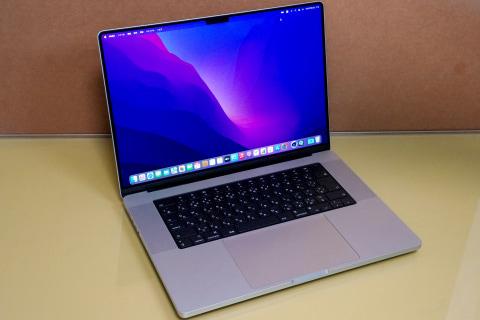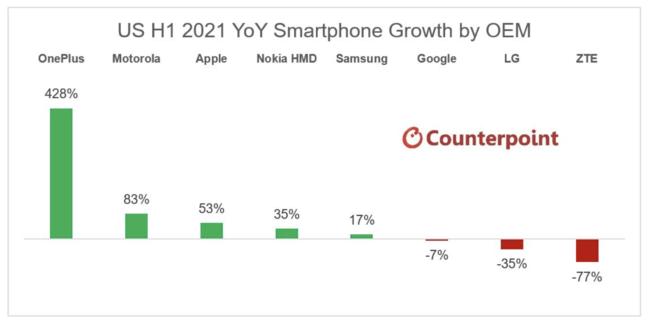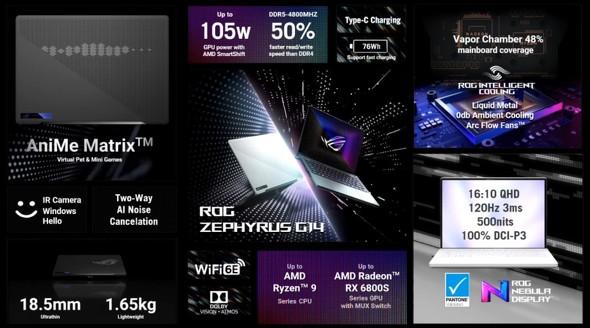How fast is the 16-inch MacBook Pro with M1 Max? Demonstrates high performance that exceeds not only Intel CPU but also GeForce
M1 Pro and M1 Max scaled based on M1
M1 Max (Photo courtesy of Apple)16-inch MacBook Pro and 14-inch MacBook Pro announced by Apple last year ( 2020) It uses the "M1 Pro" and "M1 Max", which are performance-enhanced versions of the M1 that was first installed in the 13-inch MacBook Pro.
| M1 | M1 Pro | M1 Max | |
|---|---|---|---|
| High performance cores | 4 cores | 8 cores | 8 cores |
| High efficiency cores | 4 cores | 2 cores | 2 cores |
| GPU | 8 cores | 16 cores | 32 cores |
| TFLOPS | 2.6TFLOPS | 5.2TFLOPS | 10.4TFLOPS |
| Neural engine | 16 Cores | 16 Cores | 16 Cores |
| Maximum Memory | 16GB< /td> | 32GB | 64GB |
| Memory Bandwidth | 68.2GB/s? | 200GB/s | 400GB/s |
| Memory bandwidth | 128bit? | 256bit? | 512bit? |
| DRAM | LPDDR4x-4266? | LPDDR6-6400? | LPDDR6-6400? |
| Number of transistors | 16 billion | 33.7 billion | 57 billion |
| Manufacturing Process Rules | 5nm | 5nm | 5nm |
As mentioned in the related article above, as far as the M1 Pro and M1 Max can be confirmed from the published information, it is a product that scales (expands) the M1 CPU and GPU.
Modern CPUs and GPUs are architecturally designed so that most products can be scaled. This is because the cost increases in proportion to the die size for generations with the same manufacturing process rules.

For this reason, the CPU should be designed so that it can be expanded and expanded to 4 cores, 8 cores, 16 cores, etc. For client PCs, 4 core products will be manufactured, and 2 cores will be invalidated after manufacturing. Products that cannot be used unless they are done are shipped as 2-core products.
On the other hand, it is common to create various product variations by manufacturing 8 cores or 16 cores for servers, where the cost is not as important as for client PCs.
In that sense, the M1 Pro and M1 Max are the most appropriate evaluations of the M1 scaling products.
The M1 consisted of an 8-core Arm CPU (4 high-performance cores + 4 high-efficiency cores) and an 8-core GPU, while the M1 Pro has a 10-core Arm CPU (8 high-performance cores + high Efficiency 2 cores) and 16 cores GPU, M1 Max has 10 cores Arm CPU (high performance 8 cores + high efficiency 2 cores) and 32 cores GPU.
From the perspective of high-performance cores and GPUs, the M1 Pro has twice the CPU and twice the GPU compared to the M1, and the M1 Max has twice the CPU and four times the GPU compared to the M1.
The M1 Pro and M1 Max are manufactured using the same TSMC 5nm process rules as the original M1. A year has passed since last year, and evolution is expected even in generations with the same process rules, but as long as they are manufactured in the same generation, it is natural that doubling or quadrupling the number of CPU and GPU cores This leads to an increase in size, resulting in an increase in power consumption.
For this reason, the M1 Pro and M1 Max naturally consume more power than the M1, so compared to the M1, a larger thermal design is required and a larger capacity A battery must be mounted, resulting in an increase in weight.
However, as Apple itself claims, making the CPU and GPU into an SoC and making them into a huge chip has merits in terms of performance, but rather power efficiency. is larger. I don't know if it's 7 times more efficient than Apple claims, but if the CPU/GPU is a single chip, power management will definitely be easier and more efficient.
Related articleApple, "M1 Pro", "M1 Max" that integrate GPU into one chip and demonstrate amazing performance


![10th generation Core i5 equipped 9.5h drive mobile notebook is on sale at 50,000 yen level [Cool by Evo Book] 10th generation Core i5 equipped 9.5h drive mobile notebook is on sale at 50,000 yen level [Cool by Evo Book]](https://website-google-hk.oss-cn-hongkong.aliyuncs.com/drawing/article_results_9/2022/3/9/4a18d0792cae58836b71b9f591325261_0.jpeg)





![[Amazon time sale in progress! ] 64GB microSD card of 1,266 yen and wireless earphone with noise canceling function of 52% off, etc. [Amazon time sale in progress! ] 64GB microSD card of 1,266 yen and wireless earphone with noise canceling function of 52% off, etc.](https://website-google-hk.oss-cn-hongkong.aliyuncs.com/drawing/article_results_9/2022/3/9/c88341f90bab7fe3ce1dc78d8bd6b02d_0.jpeg)
